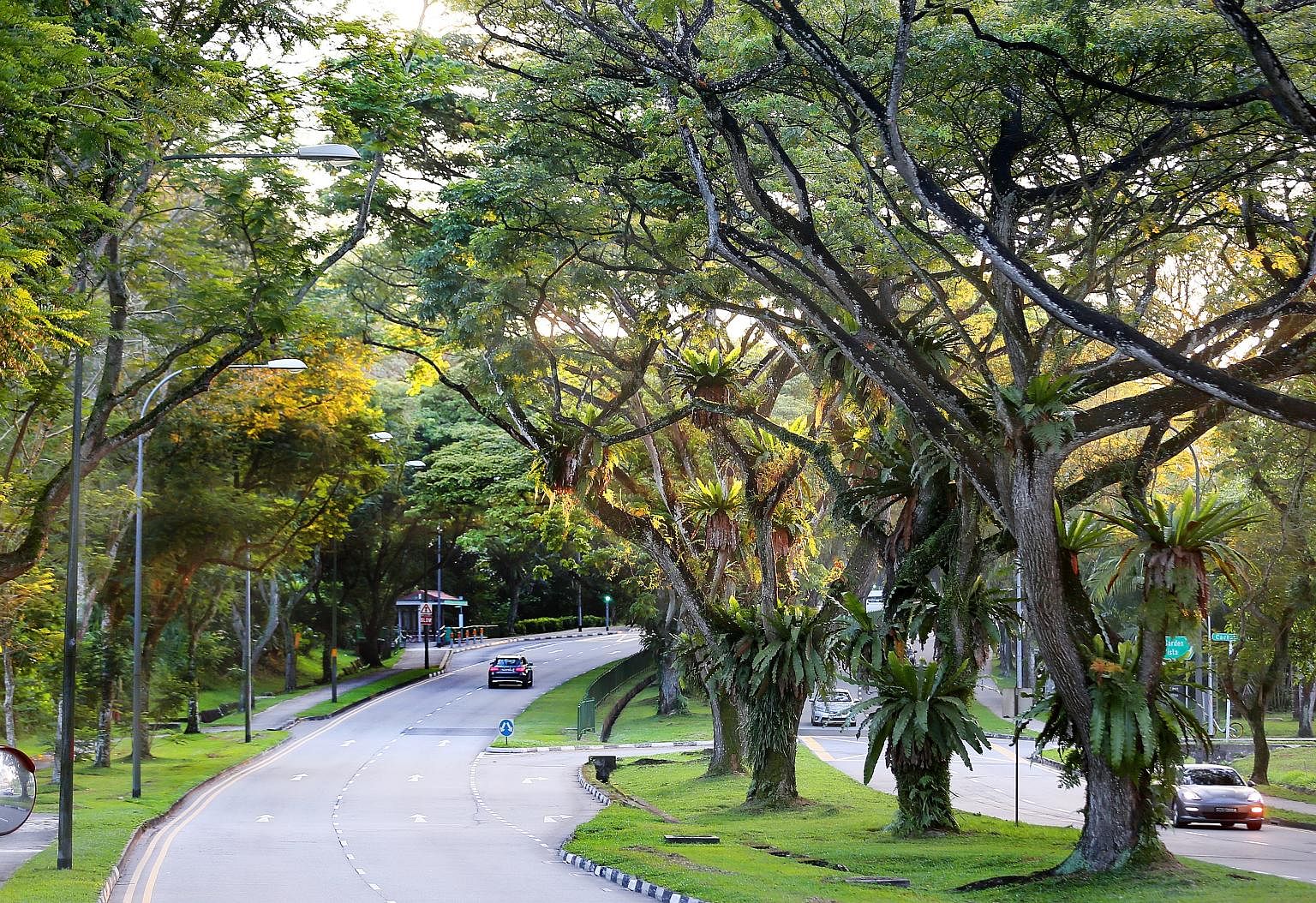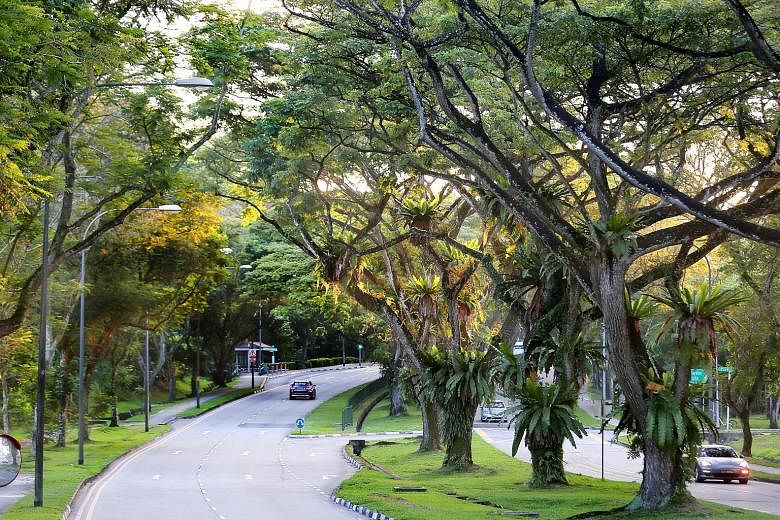There is a 1 1/2km green runway of roughly 288 trees and 10 bus stops on Yio Chu Kang Road which is mine. The area may be named for a hard-working clan of ancient settlers who built houses on the river, but I am currently claiming it. I am sure they will understand. Streets belong to those who live on them.
You can have the other 3498 1/2km of Singapore's paved roads but this parade of rain trees, which stretches from the CTE to Lentor Avenue, is my refuge.
I walk it most Sunday evenings, run it, take visitors from overseas down it, and as Glenn Campbell once sang, "I know every crack in these dirty sidewalks". Or in this case, I know the bend of every clean path, the lean of every tree and the slithering speed of the sunbathing monitor lizard that likes to claim occasional ownership.
The streets, avenues, roads I have lived on - 13 in five cities in three nations - have all gently shaped me. Perhaps we are all partly children of gravel and tar.
Remember the street-food seller? The sound of the man who sharpened knives? The tree you climbed and the kites you flew? The spitting shopkeeper and the first snotty friend you ever made from next door who you now need to find on Facebook?
My streets were inadvertent classrooms offering unintentional history lessons. In time I learnt they were named after a Vietnamese revolutionary, an English judge, a town in Lancashire, a Mahatma Gandhi supporter, and a Scottish botanical draughtsman whose paint was once eaten by flies in Tahiti.

In an era before iPhones and Netflix, sidewalks were our world. Come, walk us, all those streets said, and we will introduce you to life. They did not lie. For it was on the street that a girl's hand may have been first tremulously held, a shaking cigarette first lit or dad's car borrowed for a short ride, as a friend once did. He was 10.
Driving shows you nothing; it is only when you stroll down a street and slow life down that you will find characters on it. I did. A small-time crook, a taxi-washer oddly named Madman, a middle-aged carol singer down on his luck, tired and lean rickshaw pullers. This was Kolkata, where men slept on the pavement and bathed on it using a roadside tap from which ran the cold water of winter. The street told me, quickly, that I was fortunate.
The building where I lived was on the same street as my school, whose wall I leapt over on holidays to play hockey with the gifted maintenance staff, who I later learnt were Christian tribals. Another time, I lived next door to a club where I found a backhand, beer and a wife.
We're made, partly, by whom we meet and what we find near our addresses.
My colleague Zakir, who moved near Bukit Timah Hill two years ago, discovered not just monkeys on his street but wild boar, beautifully coloured birds and monitor lizards, and with them the lovely reassurance that we are not the only inhabitants of this island.
If he likes his new crowd, another colleague, Manny, misses the seclusion of his childhood.
He grew up on Camia Street, near a rice field on the outskirts of Manila, a place so deserted in the 1970s that even postmen would ask him for directions to unknown streets and he, then six, would get 30 cents for bubble gum as a reward for being a guide. Now, 48, he returns to find his street crowded, his view of the hills gone, and the enchanting isolation he once played in now lost.
A street has many shapes and shadows. At its kindest, it was a place with enough darkness to go hide your heartbreak as night fell. At its best, it was a playground stripped of bigotry, where my friend Pradeep, a Christian, played football with a Hindu and a Muslim, and all they religiously cared about was skill. At its worst, it was a place of poverty, ruined sidewalks, parking squabbles, and, for women in many lands, a hostile space where they had to be constantly vigilant.
Your street, of course, is like no other for it is your territory. For others it is a mere thoroughfare, but for you it is about belonging. It is your island on this planet and yet a way out into the world. If you leave it, it's best not to go back, for life is never quite as you remember it.
When my friend David returned as a man to the street on which he was a boy, the huge, wide avenue of his past was in fact a much smaller place. Sometimes, memory is more comforting than the truth.
If you stay on a street long enough, it will change shape as you do and you might not always like this edited landscape.
My colleague Yulin finds her old street in Serangoon Gardens to be alien, the sky now blocked by taller houses, swimming pools dug into gardens and younger neighbours no longer popping in for salt. It's a street with an unfamiliar tone and you can hear her wistfulness.
But I am deeply grateful to live where I do now - 10 years on a mostly unchanged road which reflects two conflicting versions of Singapore: man versus nature.
On one side a short line of squat, functional office buildings and a new condominium, on the other the tousled vegetation of a thick wilderness with its conversing insects. I prefer the quieter path, for it is serenity I seek on Sunday evenings, emptying myself of life's pesky little irritations like bills to be paid, the flat to be painted, the plumber to be called.
I surrender to my street. I walk and wonder where that rusty gate by the bushes once led to. I look up at the thin, high branches which spread out like wandering capillaries between which speckles of sunlight creep. I feel like the trees that watch over me, anchored by long, snaking roots to this place. I feel at home.


